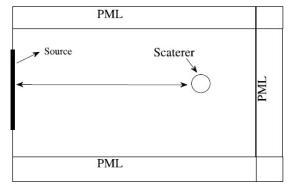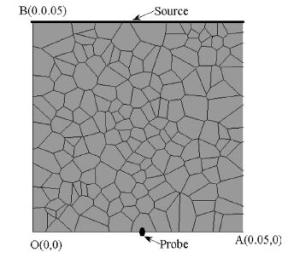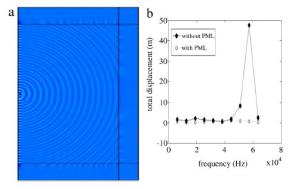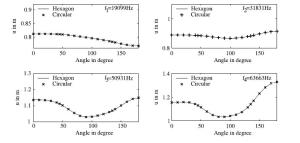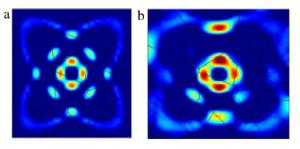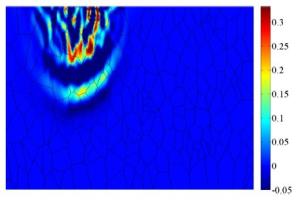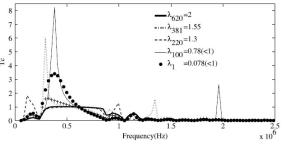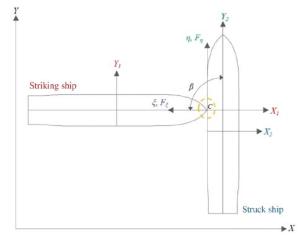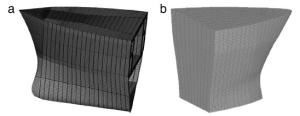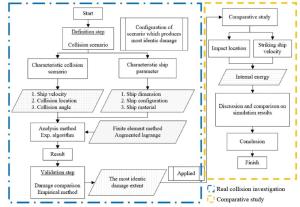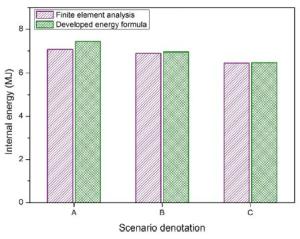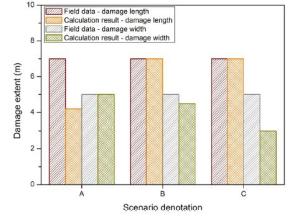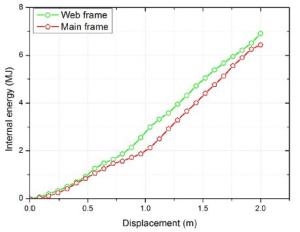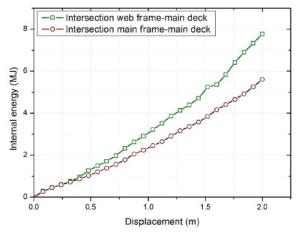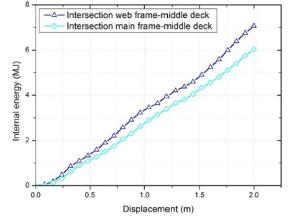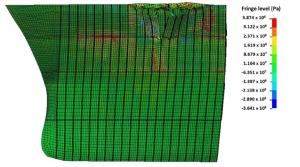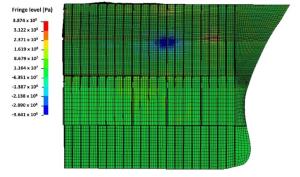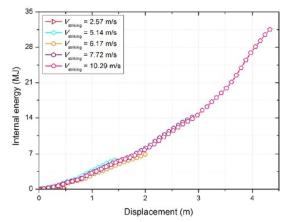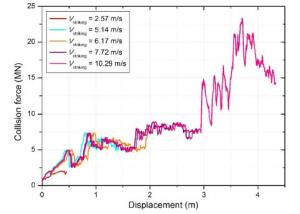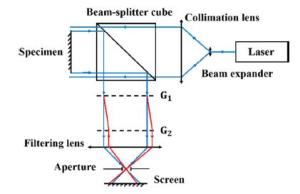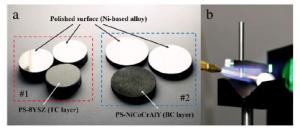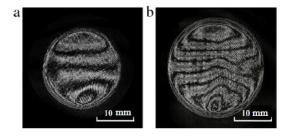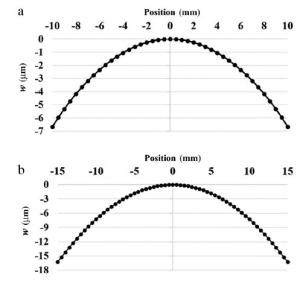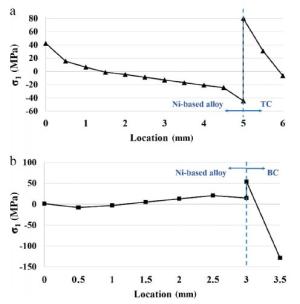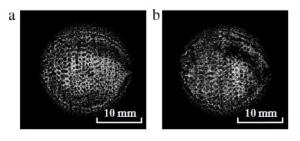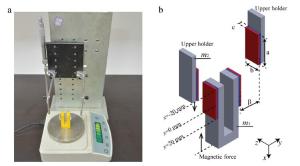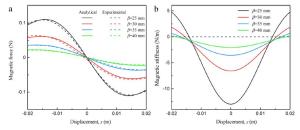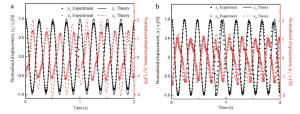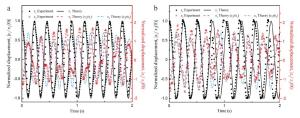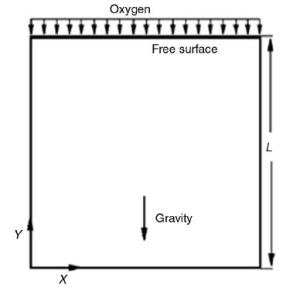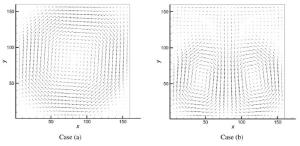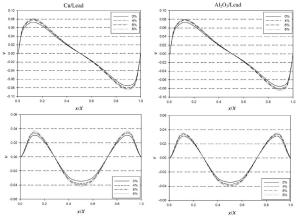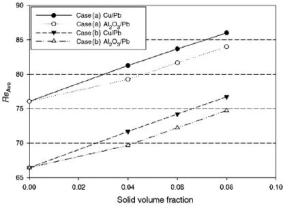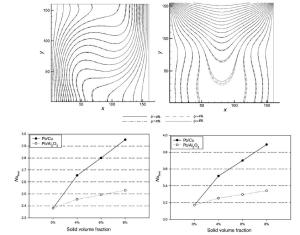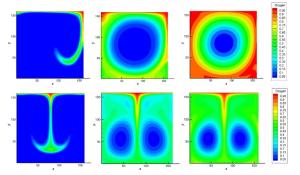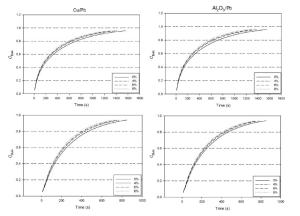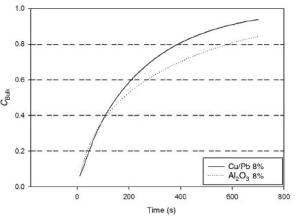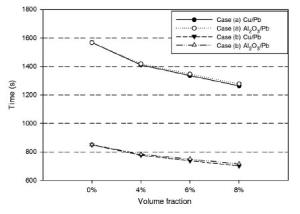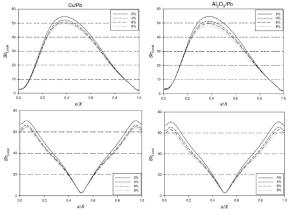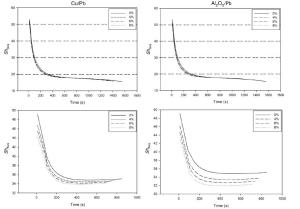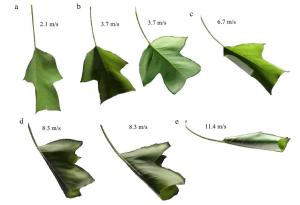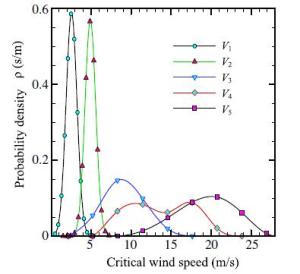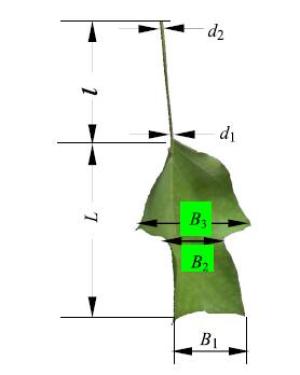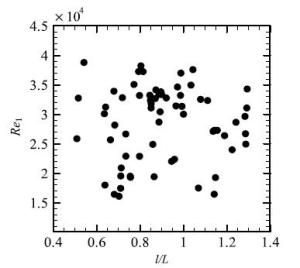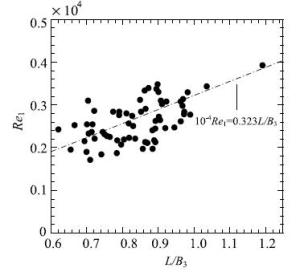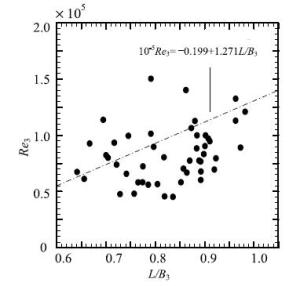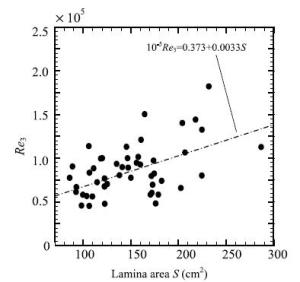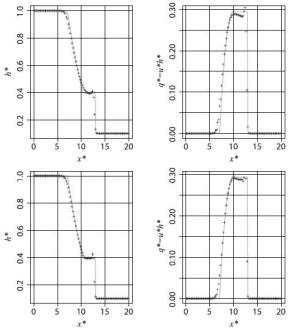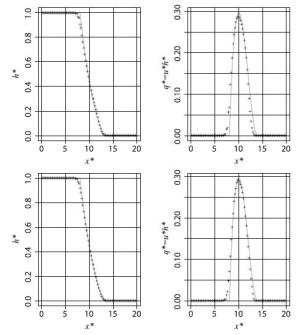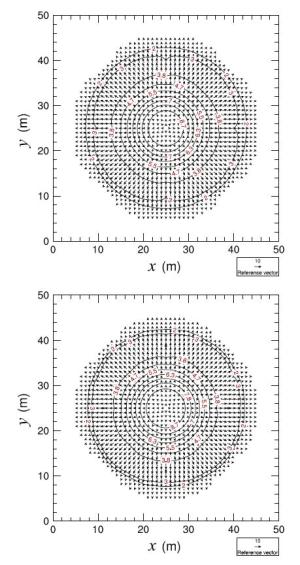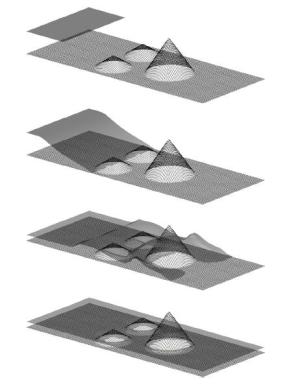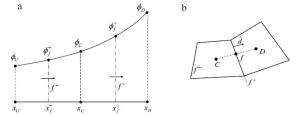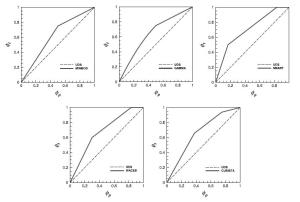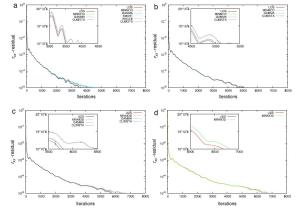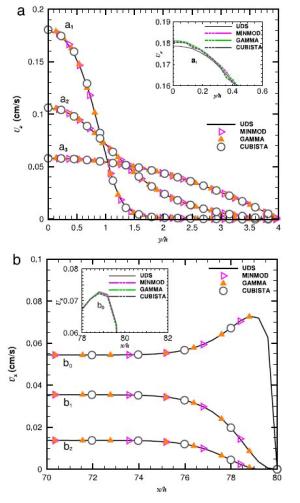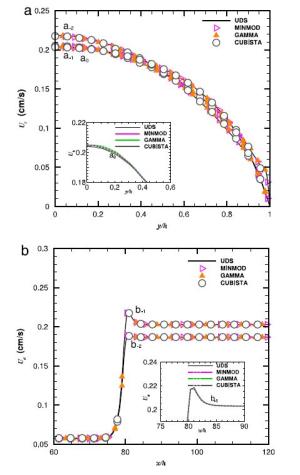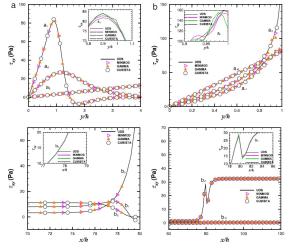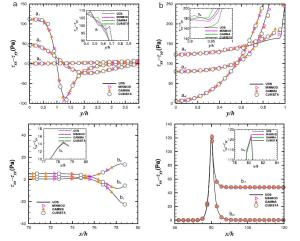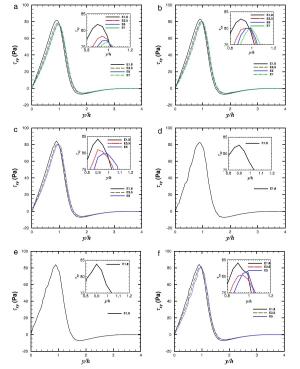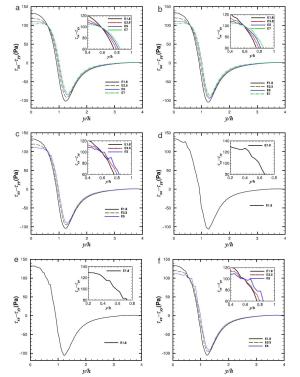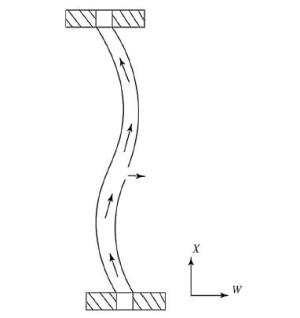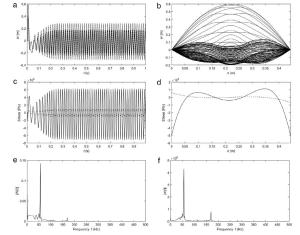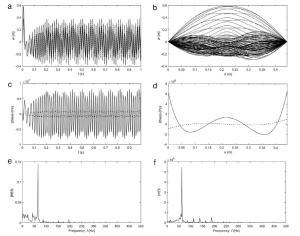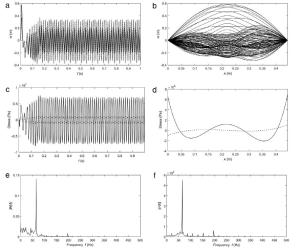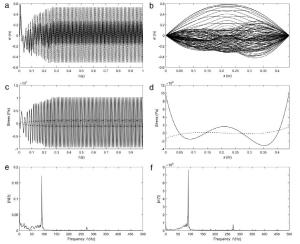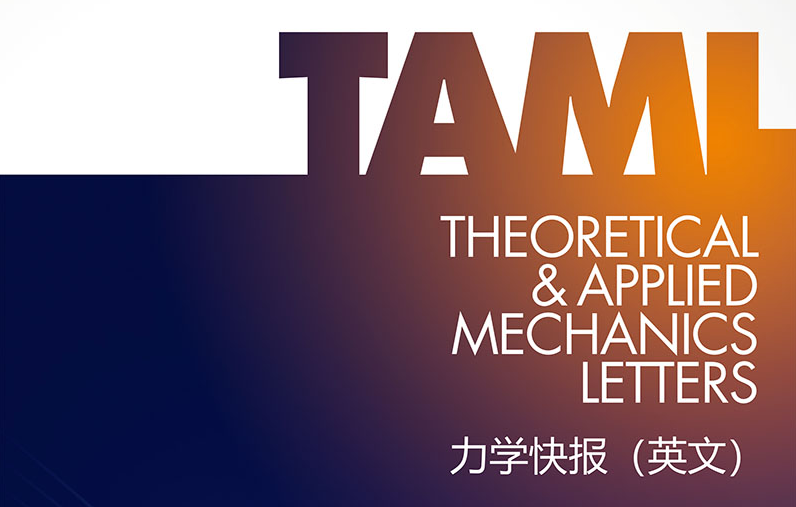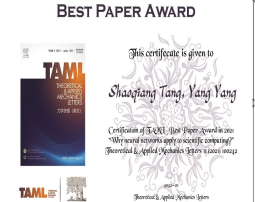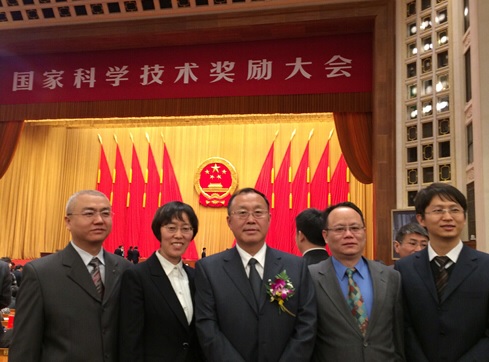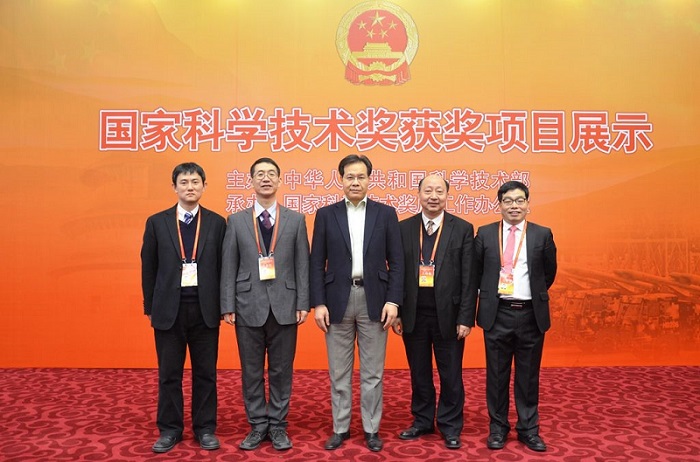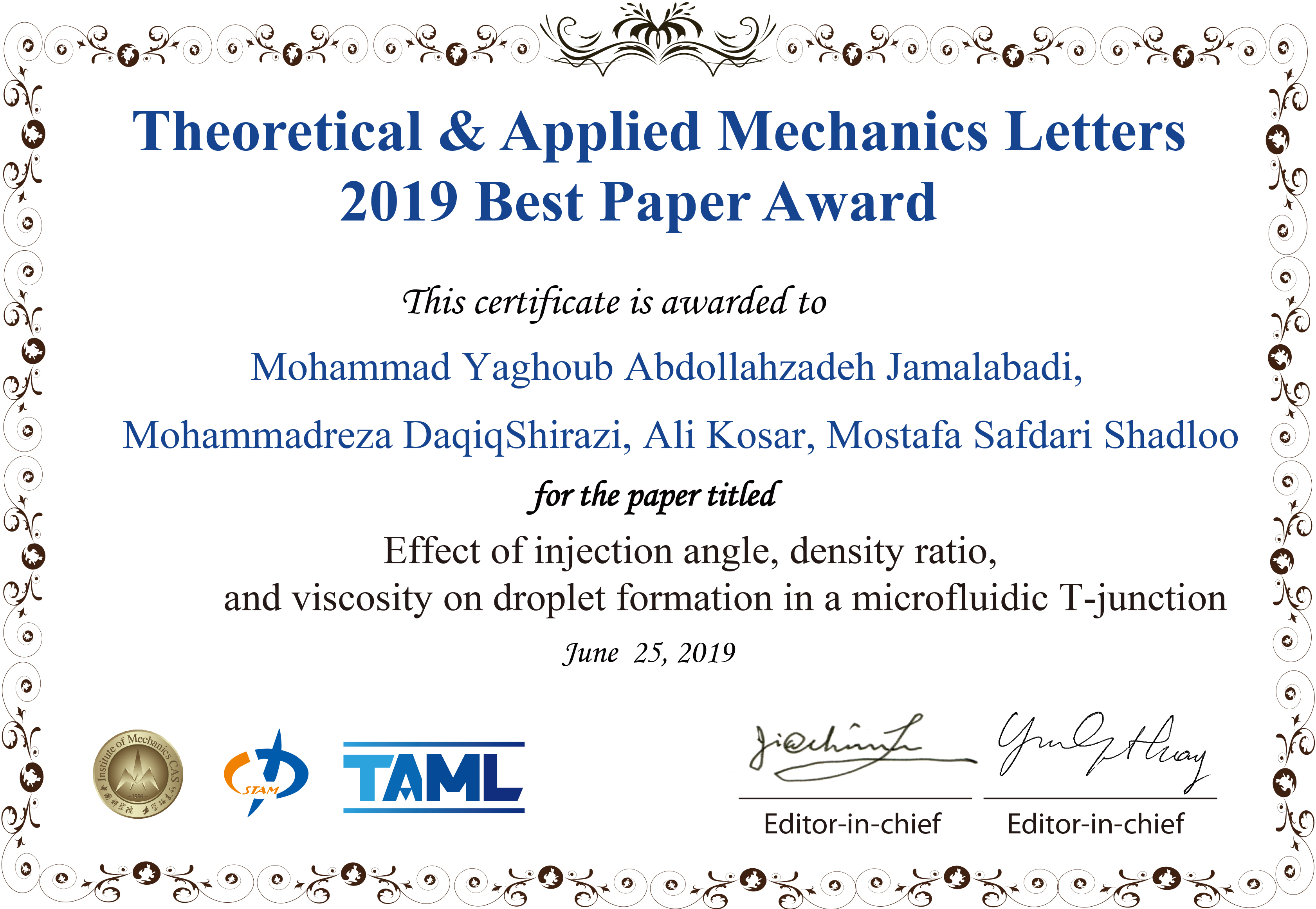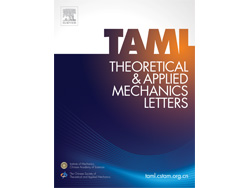Institute of Mechanics,
Chinese Academy of Sciences
2017 Vol.7(1)
Display Mode: |
Theoretical and Applied Mechanics Letters 2017, 7(1): 1-5.
doi: 10.1016/j.taml.2016.09.003
Abstract:
The paper presents Voronoi based micro-structure modeling through elastic wave propagation in a polycrystalline copper using finite element method. The micro-structural parameters studied here are; the grain size and the grain orientation. The poly-crystalline copper is modeled as a randomly oriented Voronoi cells in a fixed 2D computational domain. Tone burst 3-cycle pulse of 1 MHz frequency is used as the line source or point source for testing. Welded contact conditions are used at the interface boundaries of any two mutual cells of the domain. It is reported that wave scattering independent of the shape when the size of the scatterer less than the wavelength. Also, It is concluded that transmission efficiency increases as the cell size decreases.
The paper presents Voronoi based micro-structure modeling through elastic wave propagation in a polycrystalline copper using finite element method. The micro-structural parameters studied here are; the grain size and the grain orientation. The poly-crystalline copper is modeled as a randomly oriented Voronoi cells in a fixed 2D computational domain. Tone burst 3-cycle pulse of 1 MHz frequency is used as the line source or point source for testing. Welded contact conditions are used at the interface boundaries of any two mutual cells of the domain. It is reported that wave scattering independent of the shape when the size of the scatterer less than the wavelength. Also, It is concluded that transmission efficiency increases as the cell size decreases.
Theoretical and Applied Mechanics Letters 2017, 7(1): 6-12.
doi: 10.1016/j.taml.2016.12.001
Abstract:
The main goal of this study was to investigate the effects of selected ship collision parameter values on the characteristics of the absorbed energy in several ship collision scenarios. Non-linear simulations were performed using a finite element method (FEM) to obtain virtual experiment data. In the present research, the size of the side damage from a collision phenomenon were measured and used to verify the numerical configuration together with the calculation results using an empirical equation. Parameters in the external dynamics of a ship collision such as the location of the contact point and velocity of the striking ship were taken into consideration. The internal energy and deformation size on the side structure were discussed further in a comparative study. The effects of the selected parameters on several structural behaviors, namely energy, force, and damage extent were also observed and evaluated in this section. Stiffener on side hull was found to contribute significantly into resistance capability of the target ship against penetration of the striking bow. Remarkable force during penetration was observed to occur when inner shell was crushed as certain velocity was applied in the striking bow.
The main goal of this study was to investigate the effects of selected ship collision parameter values on the characteristics of the absorbed energy in several ship collision scenarios. Non-linear simulations were performed using a finite element method (FEM) to obtain virtual experiment data. In the present research, the size of the side damage from a collision phenomenon were measured and used to verify the numerical configuration together with the calculation results using an empirical equation. Parameters in the external dynamics of a ship collision such as the location of the contact point and velocity of the striking ship were taken into consideration. The internal energy and deformation size on the side structure were discussed further in a comparative study. The effects of the selected parameters on several structural behaviors, namely energy, force, and damage extent were also observed and evaluated in this section. Stiffener on side hull was found to contribute significantly into resistance capability of the target ship against penetration of the striking bow. Remarkable force during penetration was observed to occur when inner shell was crushed as certain velocity was applied in the striking bow.
Theoretical and Applied Mechanics Letters 2017, 7(1): 13-16.
doi: 10.1016/j.taml.2017.01.002
Abstract:
Coherent gradient sensing (CGS) method can be used to measure the slope of a reflective surface, and has the merits of full-field, non-contact, and real-time measurement. In this study, the thermal stress field of thermal barrier coating (TBC) structures is measured by CGS method. Two kinds of powders were sprayed onto Ni-based alloy using a plasma spraying method to obtain two groups of film-substrate specimens. The specimens were then heated with an oxy-acetylene flame. The resulting thermal mismatch between the film and substrate led to out-of-plane deformation of the specimen. The deformation was measured by the reflective CGS method and the thermal stress field of the structure was obtained through calibration with the help of finite element analysis. Both the experiment and numerical results showed that the thermal stress field of TBC structures can be successfully measured by CGS method.
Coherent gradient sensing (CGS) method can be used to measure the slope of a reflective surface, and has the merits of full-field, non-contact, and real-time measurement. In this study, the thermal stress field of thermal barrier coating (TBC) structures is measured by CGS method. Two kinds of powders were sprayed onto Ni-based alloy using a plasma spraying method to obtain two groups of film-substrate specimens. The specimens were then heated with an oxy-acetylene flame. The resulting thermal mismatch between the film and substrate led to out-of-plane deformation of the specimen. The deformation was measured by the reflective CGS method and the thermal stress field of the structure was obtained through calibration with the help of finite element analysis. Both the experiment and numerical results showed that the thermal stress field of TBC structures can be successfully measured by CGS method.
Theoretical and Applied Mechanics Letters 2017, 7(1): 17-21.
doi: 10.1016/j.taml.2016.12.004
Abstract:
Realization of negative stiffness (NS) in damping low frequency acoustic and mechanical vibration is relevant in engineering applications. In this work, assemblage of two repelling magnets was used to produce negative magnetic spring (NMS). A mass-spring system with NMS is experimented where the free and forced vibrations of the system are examined. The anti-phase movement is observed due to the presence of proposed NMS, confirming the analytical solution. We further showed the dynamics of the system containing NS spring could also be derived from Hamilton's principle.
Realization of negative stiffness (NS) in damping low frequency acoustic and mechanical vibration is relevant in engineering applications. In this work, assemblage of two repelling magnets was used to produce negative magnetic spring (NMS). A mass-spring system with NMS is experimented where the free and forced vibrations of the system are examined. The anti-phase movement is observed due to the presence of proposed NMS, confirming the analytical solution. We further showed the dynamics of the system containing NS spring could also be derived from Hamilton's principle.
Theoretical and Applied Mechanics Letters 2017, 7(1): 22-29.
doi: 10.1016/j.taml.2016.11.002
Abstract:
Oxygen transfer presents a serious challenge in the application of liquid lead as a nuclear coolant in advanced reactors. To mitigate corrosion by liquid lead in contact with steel, carefully controlling the oxygen concentration has been used as an effective way. Oxygen needs to mix in liquid lead uniformly and quickly. To enhance oxygen transport in liquid lead, nanoparticles are added to the liquid metal. In the current study, a lattice Boltzmann method is applied to investigate natural convection of copper/lead and aluminum oxide/lead in two-dimensional simplified container. Two thermal boundary cases are evaluated in order to check the effect of different natural convection flow patterns on oxygen transport. Some useful information are obtained such as improvement in natural convection and reduction in oxygen equilibrium time.
Oxygen transfer presents a serious challenge in the application of liquid lead as a nuclear coolant in advanced reactors. To mitigate corrosion by liquid lead in contact with steel, carefully controlling the oxygen concentration has been used as an effective way. Oxygen needs to mix in liquid lead uniformly and quickly. To enhance oxygen transport in liquid lead, nanoparticles are added to the liquid metal. In the current study, a lattice Boltzmann method is applied to investigate natural convection of copper/lead and aluminum oxide/lead in two-dimensional simplified container. Two thermal boundary cases are evaluated in order to check the effect of different natural convection flow patterns on oxygen transport. Some useful information are obtained such as improvement in natural convection and reduction in oxygen equilibrium time.
Theoretical and Applied Mechanics Letters 2017, 7(1): 30-34.
doi: 10.1016/j.taml.2016.12.002
Abstract:
The study of tree leaf aerodynamics is useful to tree protection, solar panel design and development of new power generation technology. 73 tulip leaves were tested in suspended condition and with front as well as back surface of the lamina facing wind. Three types of vibrating statuses, two types of steady statuses, and five critical wind speeds were observed. The existence probabilities of the statuses and criticals, the probability density distribution of every critical over the range of wind speed 0-27m/s, and the expected values of the criticals were obtained by statistics. The critical Reynolds number, defined by critical wind speed and lamina length, shows an increasing trend with increasing the lamina area or length to width ratio of the lamina, but it shows no trend of increase or decrease with increasing the length ratio of petiole to lamina.
The study of tree leaf aerodynamics is useful to tree protection, solar panel design and development of new power generation technology. 73 tulip leaves were tested in suspended condition and with front as well as back surface of the lamina facing wind. Three types of vibrating statuses, two types of steady statuses, and five critical wind speeds were observed. The existence probabilities of the statuses and criticals, the probability density distribution of every critical over the range of wind speed 0-27m/s, and the expected values of the criticals were obtained by statistics. The critical Reynolds number, defined by critical wind speed and lamina length, shows an increasing trend with increasing the lamina area or length to width ratio of the lamina, but it shows no trend of increase or decrease with increasing the length ratio of petiole to lamina.
Theoretical and Applied Mechanics Letters 2017, 7(1): 35-40.
doi: 10.1016/j.taml.2017.01.004
Abstract:
The fluid-in-cell (FLIC) approach of Gentry et al. (1966) is extended to second-order accuracy in space and applied to solve the 2D shallow water equations with topography. The FLIC method can be interpreted in a finite volume sense, it therefore conserves both water mass and momentum. Like the original FLIC method the second-order FLIC method presented here is able to handle wetting-drying fronts without any special treatment. Moreover, the resulting method is shock capturing and well-balanced, satisfying both the C- and extended C-properties exactly.
The fluid-in-cell (FLIC) approach of Gentry et al. (1966) is extended to second-order accuracy in space and applied to solve the 2D shallow water equations with topography. The FLIC method can be interpreted in a finite volume sense, it therefore conserves both water mass and momentum. Like the original FLIC method the second-order FLIC method presented here is able to handle wetting-drying fronts without any special treatment. Moreover, the resulting method is shock capturing and well-balanced, satisfying both the C- and extended C-properties exactly.
Theoretical and Applied Mechanics Letters 2017, 7(1): 41-51.
doi: 10.1016/j.taml.2017.01.005
Abstract:
Viscoelastic fluids due to their non-linear nature play an important role in process and polymer industries. These non-linear characteristics of fluid, influence final outcome of the product. Such processes though look simple are numerically challenging to study, due to the loss of numerical stability. Over the years, various methodologies have been developed to overcome this numerical limitation. In spite of this, numerical solutions are considered distant from accuracy, as first-order upwind-differencing scheme (UDS) is often employed for improving the stability of algorithm. To elude this effect, some works been reported in the past, where high-resolution-schemes (HRS) were employed and Deborah number was varied. However, these works are limited to creeping flows and do not detail any information on the numerical stability of HRS. Hence, this article presents the numerical study of high shearing contraction flows, where stability of HRS are addressed in reference to fluid elasticity. Results suggest that all HRS show some order of undue oscillations in flow variable profiles, measured along vertical lines placed near contraction region in the upstream section of domain, at varied elasticity number E ≈ 5. Furthermore, by E, a clear relationship between numerical stability of HRS and E was obtained, which states that the order of undue oscillations in flow variable profiles is directly proportional to E.
Viscoelastic fluids due to their non-linear nature play an important role in process and polymer industries. These non-linear characteristics of fluid, influence final outcome of the product. Such processes though look simple are numerically challenging to study, due to the loss of numerical stability. Over the years, various methodologies have been developed to overcome this numerical limitation. In spite of this, numerical solutions are considered distant from accuracy, as first-order upwind-differencing scheme (UDS) is often employed for improving the stability of algorithm. To elude this effect, some works been reported in the past, where high-resolution-schemes (HRS) were employed and Deborah number was varied. However, these works are limited to creeping flows and do not detail any information on the numerical stability of HRS. Hence, this article presents the numerical study of high shearing contraction flows, where stability of HRS are addressed in reference to fluid elasticity. Results suggest that all HRS show some order of undue oscillations in flow variable profiles, measured along vertical lines placed near contraction region in the upstream section of domain, at varied elasticity number E ≈ 5. Furthermore, by E, a clear relationship between numerical stability of HRS and E was obtained, which states that the order of undue oscillations in flow variable profiles is directly proportional to E.
Theoretical and Applied Mechanics Letters 2017, 7(1): 52-57.
doi: 10.1016/j.taml.2017.02.003
Abstract:
It is known to all, the spilling of pipeline may cause serious problems, especially when the pipe conveying petroleum, natural gas or other toxic substance. There are countless accidents during past century. Once the spilling occurs, the vibration of the pipe would aggravate spill situation and even result in crack of the pipe. The consequence will be more severe when the fluid inside is compressible. To prevent the detriment of the spilling model is developed by assuming the leakages as orifices or nozzles and a 2-D vertical simply supported pipe is selected to analyze the phenomena of the oscillation. Combining these two models, the oscillation model for the pipe with leakage is set up and the spilling effect is analyzed by numerical method. The amplitude of the pipe oscillation and the normal stress enlarge as the internal velocity
It is known to all, the spilling of pipeline may cause serious problems, especially when the pipe conveying petroleum, natural gas or other toxic substance. There are countless accidents during past century. Once the spilling occurs, the vibration of the pipe would aggravate spill situation and even result in crack of the pipe. The consequence will be more severe when the fluid inside is compressible. To prevent the detriment of the spilling model is developed by assuming the leakages as orifices or nozzles and a 2-D vertical simply supported pipe is selected to analyze the phenomena of the oscillation. Combining these two models, the oscillation model for the pipe with leakage is set up and the spilling effect is analyzed by numerical method. The amplitude of the pipe oscillation and the normal stress enlarge as the internal velocity
 Submit a Paper
Submit a Paper
 Subscription
Subscription
News
MORE+
Call for Papers
MORE+
- Crossing-Mechanics Driven by Big Data
- Machine learning in the fluid mechanics research of wind energy
- Mechanics of Origami/Kirigami structures and metamaterials
- New insights and perspectives on impact biomechanics for human tissues: from injury prevention, protection to protective equipment
- Environmental Mechanics for Extreme Natural Events



